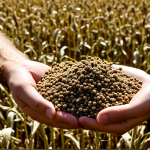Historical origins and evolution of the full English breakfast
The history of English breakfast traces back to the Victorian era, where it evolved as a substantial meal to fuel long working days. Its origins lie in the British rural lifestyle, where farmers needed nourishing and energy-packed food early in the day. Initially, this breakfast combined locally available ingredients, reflecting a pragmatic approach to fuel the body.
Over time, the British breakfast tradition expanded beyond labor needs, becoming a symbol of hospitality and social status. Wealthier households showcased their affluence by serving elaborate morning meals. The full English breakfast gradually represented warmth and welcome, often enjoyed by guests as a sincere gesture of generosity.
In parallel : How can you achieve the perfect balance of flavors in a Toad in the Hole?
Culturally, this meal embodied British values of comfort and stability. It reinforced daily routines and domestic order, weaving itself into the social fabric as more than just food, but a celebration of tradition and unity. Today, the full English breakfast remains a beloved culinary icon, preserving a rich past while adapting subtly to modern tastes.
Typical ingredients in a traditional full English breakfast
The full English breakfast ingredients consist of a hearty combination that has become synonymous with British cuisine. Core breakfast staples include:
Also read : How can you make a traditional spotted dick from scratch?
- Eggs, usually fried or scrambled, provide essential protein.
- Bacon and sausages add savory, rich flavors that define the meal’s character.
- Baked beans offer a comforting, sweet balance, traditionally stewed in tomato sauce.
- Mushrooms and grilled tomatoes contribute earthiness and freshness, rounding out the plate.
- Black pudding, a type of blood sausage, adds a unique texture and taste highly prized in the breakfast lineup.
- Toast remains essential to absorb juices and complement other items.
Across the British Isles, variations in these ingredients reflect local tastes and availability. For example, some regions may emphasize certain sausages or add regional specialties alongside the classic elements.
Selecting authentic, high-quality ingredients is crucial when preparing an English breakfast. Freshness enhances taste, while traditional sourcing preserves the meal’s cultural heritage. This careful ingredient choice supports the dish’s status as a symbol of British culinary tradition.
Traditional preparation and cooking methods
Traditional preparation of a full English breakfast demands attention to each ingredient’s ideal cooking method. Cooking full English breakfast requires balance—ensuring every component is properly cooked and retains its flavour. For example, bacon is often fried or grilled to a crispy finish, while sausages are typically gently fried to prevent bursting yet ensure thorough cooking. Eggs, a key element, are commonly prepared fried, scrambled, or poached based on preference, each requiring precise timing.
Mushrooms and tomatoes are usually pan-fried or grilled, bringing out their natural juices and adding savoriness. Baked beans are traditionally heated gently to avoid mashing. Black pudding, a distinctive item, is sliced and fried until slightly crisp on the outside, maintaining its unique texture.
How to make English breakfast successfully involves assembling ingredients on a warmed plate to maintain heat and providing a visually appealing presentation. Regional cooking variations influence techniques; some areas prefer their sausages well browned, others opt for softer textures. Toast is typically buttered lightly, serving as a neutral side to absorb the breakfast’s richer elements.
Following traditional recipes ensures the breakfast’s iconic balance of textures and tastes, preserving its heritage while delivering a satisfying meal.
Regional variations and serving suggestions
British culinary diversity shines through in the many English breakfast variations found across regions. The traditional full English breakfast adapts to local tastes and ingredients, showcasing unique regional identities within the broader British breakfast tradition. For example, the Scottish breakfast often includes haggis alongside traditional sausages, while the Welsh version may feature laverbread, a seaweed delicacy, highlighting local produce.
Serving styles also vary. In some northern English areas, fried bread replaces toast, adding a richer texture. Presentation tends to emphasize warmth and abundance, reinforcing the meal’s role as a hearty, satisfying start to the day. Garnishes like fresh parsley or a squeeze of lemon on grilled tomatoes can brighten the plate.
To complement these savory breakfasts, popular beverages include strong black tea, a classic choice, or robust coffee, catering to modern preferences. Some regions pair their breakfasts with fruit juices for balance. Such serving suggestions enhance the full experience, ensuring each breakfast reflects its regional heritage while remaining true to the essence of a comforting British morning meal.
Historical origins and evolution of the full English breakfast
The history of English breakfast begins in the rural settings of Britain, where the origins reflect practical needs of early workers. Farmers and laborers required a robust, energy-dense meal to sustain long, physically demanding days. This early British breakfast tradition was utilitarian, relying on locally sourced ingredients readily available in country households.
As industrialization progressed, the breakfast evolved into a social staple beyond mere sustenance. The Victorian era saw its rise as a marker of hospitality, where serving a full English breakfast became a gesture of welcome and generosity. This shift positioned the dish within British culture not only as food but as an expression of warmth and societal values.
Over time, the history of English breakfast cemented its identity as a symbol of comfort and tradition in British life. Its preparation and consumption came to reflect domestic order and social rituals. This enduring link highlights the full English breakfast’s role in fostering community and continuity within the British breakfast tradition.




